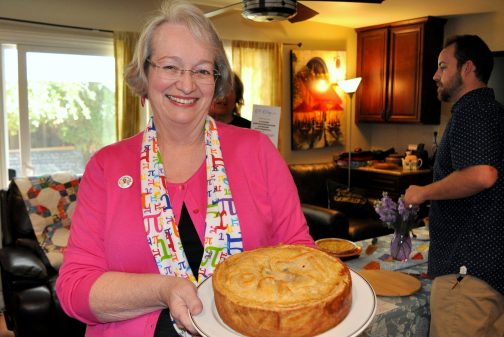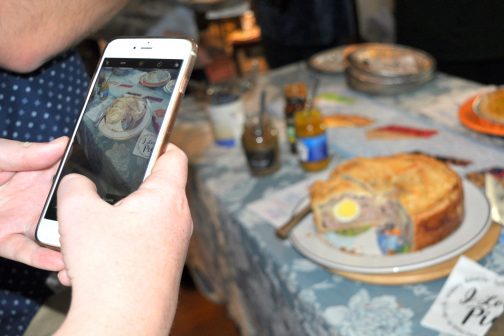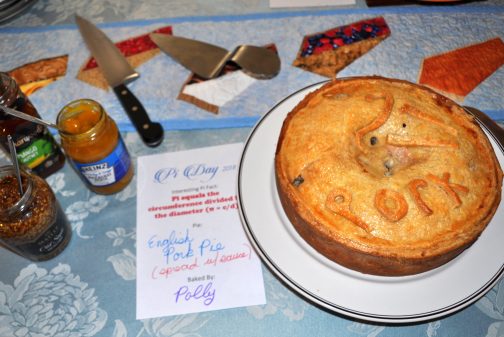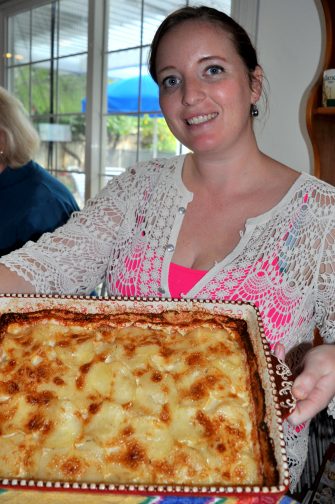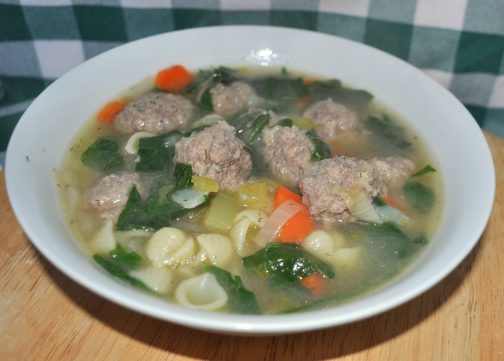
Not every published recipe works, and that’s a pet peeve of mine. Recently my Cookbook Club received the galley proofs for a soon-to-be-published cookbook. We cooked 19 recipes from the cookbook. Not one worked as written! Not one! Quantities didn’t fit into the stated pans, the oven temperatures were too low, cooking times were too short, methods were inconsistent, steps were missing, and some recipes simply didn’t work or were just plain weird… Jicama Fries anyone? Cauliflower with red wine?
I think the author had some good ideas, but I don’t think any recipe was tested outside of her kitchen or by anyone other than herself. Badly written (or just plain wrong) recipes are a pet peeve of mine. I think some people end up thinking they are bad cooks just because they have had a couple of run-ins with bad recipes. Gr-r-r-r. It’s all about the recipe, folks (which was the name of my second “cookbook”, that I had passed out to my friends on my 50th birthday).
That all being said, this recipe, from the cookbook we reviewed, has become a favorite. It’s a sheet pan recipe! A ‘new trend’, which is really an old one rehashed, but whatev! After living six decades I have seen trends come, go, and come back again. Anyway, back to the recipe. I had to make some adjustments to methods and oven temperatures, and add in the rice component and now this recipe is one of the quickest, company-worthy, restaurant quality dinners I have on file. The picture above doesn’t do it justice. The shrimp are much more saucy and colorful. The picture below is a bit better, but I only had half the quantity of snap peas and I really should have removed the tails from the shrimp before cooking them. So, on with the recipe, because it’s a good one.
Note: I have been going back and forth about crediting this recipe to the cookbook author referenced above. After much thought I decided not to because I said so many negative (but truthful) things about her cookbook.

To make this you’ll need TWO large sheet pans, and some cooked rice. Either serve the dish in three different bowls, a bowl of rice, a bowl of peas, and a bowl of shrimp, OR layered in one 9×13 serving dish.
Sweet Chili-Lime Shrimp with Sugar Snap Peas
1/2 cup orange marmalade (heated slightly to make pour-able and mixable)
1/4 cup soy sauce
1/4 cup freshly squeezed lime juice (usually 2 limes)
2 teaspoons Thai Chili Garlic Paste (It’s red, and sold in jars in Asian section of most grocery stores)
1 teaspoon ground ginger
2 lbs shrimp, defrosted if necessary, with shells and tails removed (I like the frozen shrimp from Costco)
1 pound sugar snap peas
2 cups hot prepared rice
2 tablespoons olive oil
- Preheat oven to 400 degrees F.
- Combine marmalade, soy sauce, lime juice, chili-garlic paste and ground ginger.
- Place the prepared shrimp into a large bowl or a large Ziploc bag. Pour marmalade mixture over shrimp and toss to coat.
- Pour the shrimp and all the marinade onto a sheet pan.
- Rinse and dry the sugar snap peas, and then toss with the olive oil.
- Pour the sugar snap peas onto another sheet pan.
- Place both sheet pans into hot 400 degree oven.
- Remove the snap peas after 5-7 minutes. Peas should be shiny and crisp.
- Let the shrimp cook for an additional minute or two. Remove from the oven when fully cooked, the shrimp should be totally opaque and curled into a “C” shape.
- Either serve the dish in three different bowls, a bowl of rice, a bowl of peas, and a bowl of shrimp, OR, as I do now, in one 9×13 serving dish with rice on the bottom, peas in the next layer, and the shrimp and sauce poured on top. The sauce eventually meets the rice and…, yum-m-m…, heaven!
- Serve and share 🙂
Thanks for stopping by my kitchen today!



